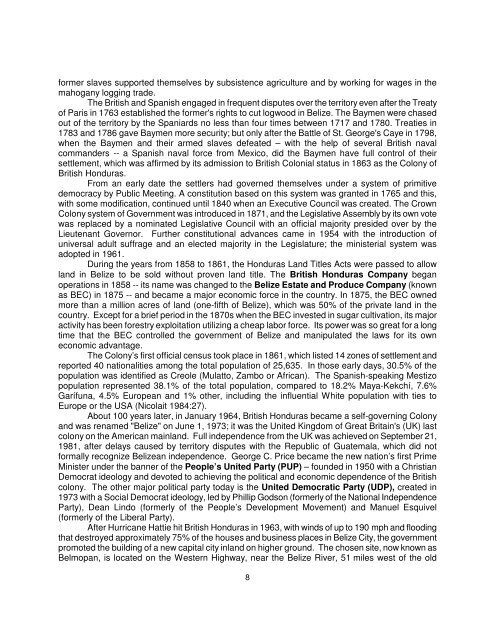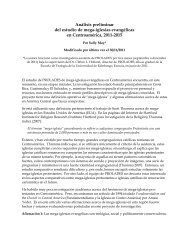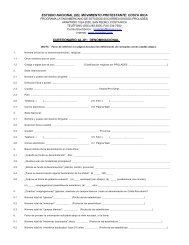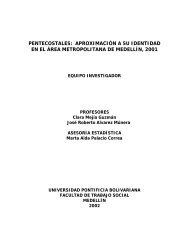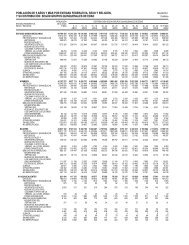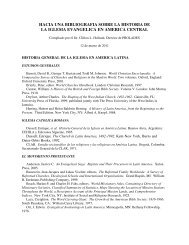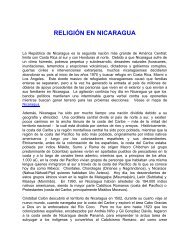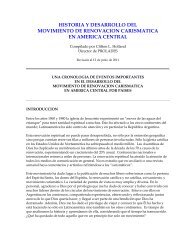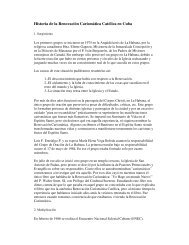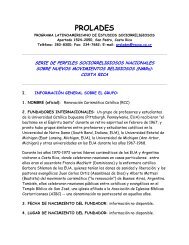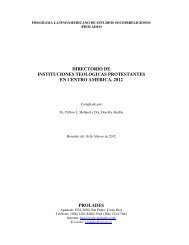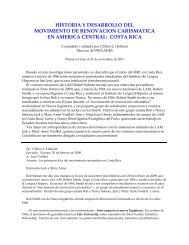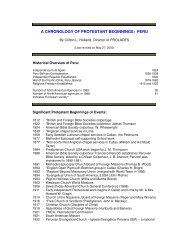belize, 1980 - Prolades.com
belize, 1980 - Prolades.com
belize, 1980 - Prolades.com
Create successful ePaper yourself
Turn your PDF publications into a flip-book with our unique Google optimized e-Paper software.
former slaves supported themselves by subsistence agriculture and by working for wages in the<br />
mahogany logging trade.<br />
The British and Spanish engaged in frequent disputes over the territory even after the Treaty<br />
of Paris in 1763 established the former's rights to cut logwood in Belize. The Baymen were chased<br />
out of the territory by the Spaniards no less than four times between 1717 and 1780. Treaties in<br />
1783 and 1786 gave Baymen more security; but only after the Battle of St. George's Caye in 1798,<br />
when the Baymen and their armed slaves defeated – with the help of several British naval<br />
<strong>com</strong>manders -- a Spanish naval force from Mexico, did the Baymen have full control of their<br />
settlement, which was affirmed by its admission to British Colonial status in 1863 as the Colony of<br />
British Honduras.<br />
From an early date the settlers had governed themselves under a system of primitive<br />
democracy by Public Meeting. A constitution based on this system was granted in 1765 and this,<br />
with some modification, continued until 1840 when an Executive Council was created. The Crown<br />
Colony system of Government was introduced in 1871, and the Legislative Assembly by its own vote<br />
was replaced by a nominated Legislative Council with an official majority presided over by the<br />
Lieutenant Governor. Further constitutional advances came in 1954 with the introduction of<br />
universal adult suffrage and an elected majority in the Legislature; the ministerial system was<br />
adopted in 1961.<br />
During the years from 1858 to 1861, the Honduras Land Titles Acts were passed to allow<br />
land in Belize to be sold without proven land title. The British Honduras Company began<br />
operations in 1858 -- its name was changed to the Belize Estate and Produce Company (known<br />
as BEC) in 1875 -- and became a major economic force in the country. In 1875, the BEC owned<br />
more than a million acres of land (one-fifth of Belize), which was 50% of the private land in the<br />
country. Except for a brief period in the 1870s when the BEC invested in sugar cultivation, its major<br />
activity has been forestry exploitation utilizing a cheap labor force. Its power was so great for a long<br />
time that the BEC controlled the government of Belize and manipulated the laws for its own<br />
economic advantage.<br />
The Colony’s first official census took place in 1861, which listed 14 zones of settlement and<br />
reported 40 nationalities among the total population of 25,635. In those early days, 30.5% of the<br />
population was identified as Creole (Mulatto, Zambo or African). The Spanish-speaking Mestizo<br />
population represented 38.1% of the total population, <strong>com</strong>pared to 18.2% Maya-Kekchí, 7.6%<br />
Garífuna, 4.5% European and 1% other, including the influential White population with ties to<br />
Europe or the USA (Nicolait 1984:27).<br />
About 100 years later, in January 1964, British Honduras became a self-governing Colony<br />
and was renamed "Belize" on June 1, 1973; it was the United Kingdom of Great Britain's (UK) last<br />
colony on the American mainland. Full independence from the UK was achieved on September 21,<br />
1981, after delays caused by territory disputes with the Republic of Guatemala, which did not<br />
formally recognize Belizean independence. George C. Price became the new nation’s first Prime<br />
Minister under the banner of the People’s United Party (PUP) – founded in 1950 with a Christian<br />
Democrat ideology and devoted to achieving the political and economic dependence of the British<br />
colony. The other major political party today is the United Democratic Party (UDP), created in<br />
1973 with a Social Democrat ideology, led by Phillip Godson (formerly of the National Independence<br />
Party), Dean Lindo (formerly of the People’s Development Movement) and Manuel Esquivel<br />
(formerly of the Liberal Party).<br />
After Hurricane Hattie hit British Honduras in 1963, with winds of up to 190 mph and flooding<br />
that destroyed approximately 75% of the houses and business places in Belize City, the government<br />
promoted the building of a new capital city inland on higher ground. The chosen site, now known as<br />
Belmopan, is located on the Western Highway, near the Belize River, 51 miles west of the old<br />
8


